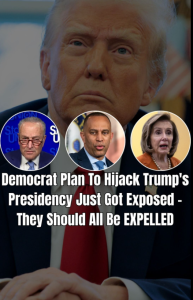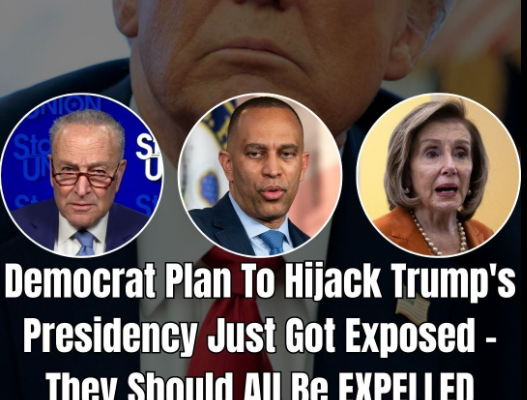
Vance, Johnson Reveal Outrageous Dem Demands To Avoid Government Shutdown
The United States once again finds itself standing at the brink of a government shutdown, and the political battle lines could not be clearer. With the funding deadline fast approaching, Republican leaders Vice President J.D. Vance and House Speaker Mike Johnson have launched a public offensive against their Democratic counterparts, accusing them of making what they call “outrageous demands” as a condition for keeping the government open. What makes this standoff significant is not only the substance of those demands, but also the fierce framing of them by Republicans who are determined to place the blame squarely on Democrats if the lights go out in Washington.
To understand the scope of the dispute, it is important to start with the basics. The federal government cannot operate without congressional approval to spend money. Each year, Congress is supposed to pass a set of twelve appropriations bills that fund everything from the Pentagon to the Department of Education. But in recent decades, gridlock has often prevented those bills from being passed on time. Instead, lawmakers resort to a stopgap measure known as a continuing resolution, or CR. This temporary bill simply extends current funding levels for a set period, buying more time for negotiations over the full year’s budget.
This time around, Republicans put forward what they called a clean continuing resolution, one that would extend funding through November without policy riders or partisan add-ons. Their argument is simple: keep the government open now and fight about larger issues later. Democrats, however, have rejected that approach. They argue that several urgent policy questions cannot be put off, particularly when it comes to health care. Specifically, Democrats are demanding that the stopgap include the extension of Affordable Care Act subsidies that make monthly insurance premiums affordable for millions of lower- and middle-income Americans. Without those subsidies, many families could see their costs skyrocket within months.
To Republicans like Vance and Johnson, these conditions amount to legislative hostage-taking. Johnson has accused Democrats of trying to load the temporary funding bill with costly giveaways and controversial policy changes. In one of his more fiery statements, he argued that Democrats want to “add trillions in new spending to a seven-week stopgap bill and reinstate free health care for illegal aliens, all paid for by American taxpayers.” Vance has gone further, warning that Democrats are willing to shut down the government unless their health care demands are met. In a post on social media, he claimed, “Democrats are about to shut down the government because they demand we fund healthcare for illegal aliens.” By framing the issue in such stark terms, Republicans are trying to seize the high ground in the public debate.
Democrats, for their part, see things differently. They argue that protecting health care subsidies is not a partisan wish list item but a moral and practical necessity. Millions of Americans have already enrolled in coverage under the assumption that subsidies would remain in place. Letting them lapse, Democrats say, would be a betrayal of families who depend on affordable premiums. They also argue that pushing this fight down the road only increases the risk that Republicans will refuse to act later, making now the only moment to secure these protections. On Medicaid, Democrats insist that reversing cuts is essential for hospitals and vulnerable populations, particularly in rural and low-income communities.
The clash highlights a fundamental difference in how each party approaches stopgap funding. Republicans see a continuing resolution as a tool for delay, a way to avoid immediate conflict and negotiate comprehensive deals later. Democrats see it as an opportunity to lock in urgent priorities before it is too late. Both strategies have their risks. For Republicans, punting the healthcare fight may look like avoidance or even sabotage if the subsidies disappear. For Democrats, refusing to pass a clean CR risks triggering a shutdown that voters may ultimately blame on them.
From a political strategy perspective, the language of “outrageous demands” is more than just rhetoric. It is a calculated move to shape public perception. History shows that in most shutdowns, the party perceived as less reasonable suffers the greater political cost. By labeling Democratic conditions as extreme, Vance and Johnson hope to paint Republicans as the adults in the room, willing to keep the government open while Democrats play politics. For Republicans, this framing not only shifts potential blame but also energizes their base, which is skeptical of expanded health spending and deeply opposed to benefits for undocumented immigrants.
Yet the Democratic counter-narrative has power too. They argue that what Republicans call “outrageous” are in fact basic protections for American families. They accuse Republicans of treating health care for millions as a bargaining chip, of ignoring real-world consequences in favor of political posturing. Democrats also question whether Republicans can be trusted to revisit the subsidies later. To them, failing to address the issue now is as good as ending the program.
The risks of a shutdown are not abstract. If no deal is reached, hundreds of thousands of federal workers could be furloughed without pay, national parks and museums could close, and critical government services could slow to a crawl. While essential operations like Social Security payments and military functions would continue, a prolonged shutdown would cause real disruptions to the economy and to everyday life. The political damage would be even harder to contain.
So what are the possible outcomes? The most optimistic scenario is that a compromise emerges before the deadline. This could involve some limited concession on subsidies or a short extension tied to reforms. Alternatively, Democrats might accept a clean CR if Republicans commit publicly to negotiate healthcare funding in the coming weeks. But if neither side budges, a shutdown could begin, with both parties gambling that public opinion will favor their side. Another possibility is that a small number of moderates from either party cross the aisle to break the deadlock, though such moves carry political risk in today’s polarized environment.
Beyond the immediate crisis, this standoff reveals deeper tensions about how government should function. Republicans argue for restraint, warning against adding costly programs to emergency bills. Democrats argue for urgency, warning against delaying protections that affect millions. Both sides claim to be defending the public interest, but their visions for the role of government remain far apart.
In the coming days, the question is less about who is technically correct and more about who the American people believe is acting responsibly. Vance and Johnson are betting that words like “outrageous” will stick, framing Democrats as reckless partisans. Democrats are betting that Americans will side with them when the issue is framed as protecting health care for ordinary families. The answer may not be clear until after the dust settles, but what is certain is that the stakes are high, both for the functioning of the government and for the political fortunes of both parties.
At its core, this episode underscores the fragility of the nation’s budget process. A government as large and complex as the United States cannot operate effectively if every funding deadline becomes a showdown. Yet until a new political consensus emerges, shutdown brinkmanship will remain a recurring feature of American politics. For now, the public watches anxiously as leaders trade accusations, hoping that in the end, responsibility prevails over outrage.

